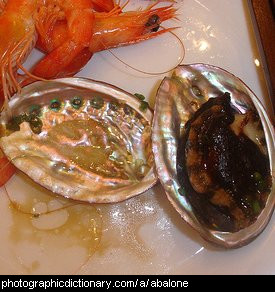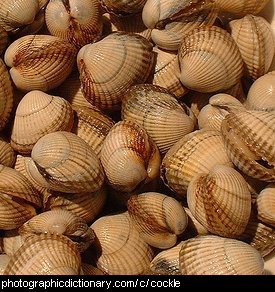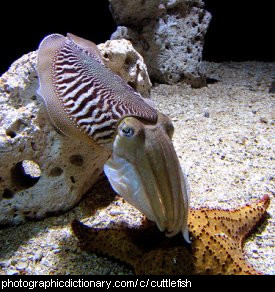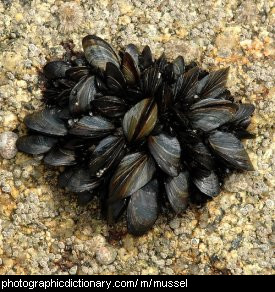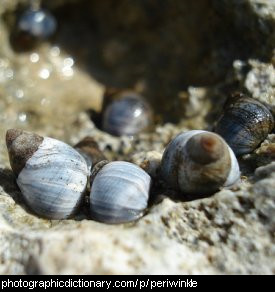Scientific name: family: cardiidae
Cockles are related to clams, mussels and snails. They have a shell in two parts joined by a hinge. Cockles burrow into sandy beaches and eat tiny creatures in the water that washes over them.
Cockles can be caught and eaten. They are cooked in much the same way as other similar creatures like mussels.
Cis forCuttlefish
Scientific name: order: sepiida
Cuttlefish are not fish, but are a type of mollusc related to squid and octopi. Cuttlefish have three hearts, blue-green blood and a single bone inside them. You often see cuttle bones being given to budgerigars. They can change colour to camouflage with the environment around them.
Cuttlefish are caught as food and prepared in a similar way to squid.
Video: view
Scientific name: family: ostreidae
Oysters are a kind of mollusc that lives in the sea or salty water. Their shell is in two halves like a clam shell, and the oyster can pull it closed. Oysters eat by filtering food from the water that flows over its shell. They live their adult lives stuck to rocks - a young oyster that has just stuck to a rock is called a spat.
Oysters have been eaten for thousands of years. They can be eaten raw, cooked, smoked or as part of another dish like soup.
Pis forPeriwinkle
Scientific name: littorina littorea
Scientific name: family: pectinidae
Scallops are a kind of mollusc related to clams and snails. Their shell is in two halves with a hinge joining them. Scallop shells are a very pretty fan-shape.
Scallops can swim by opening and closing their shells. The muscle that holds the two halves of the shell together is the part that is commonly seen cooked for food, as you can see in the picture.
Video: view
Slugs can be found on land and in the water, both freshwater and the sea. They are very similar to snails but slugs don't have a shell, and in fact any land mollusc without a shell can be called a slug. Since they have nowhere to hide inside and can dry out, slugs usually live in moist or wet places.


